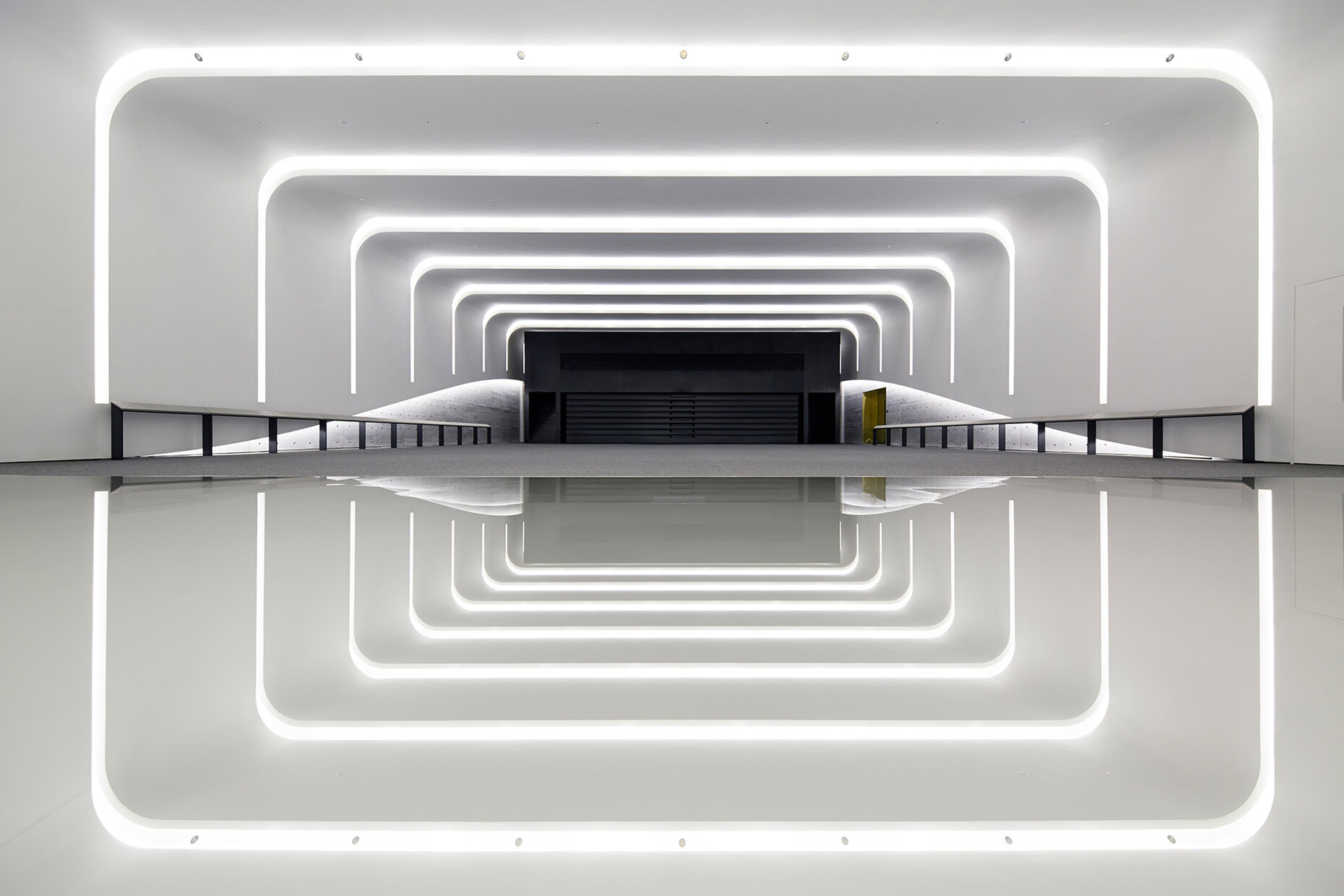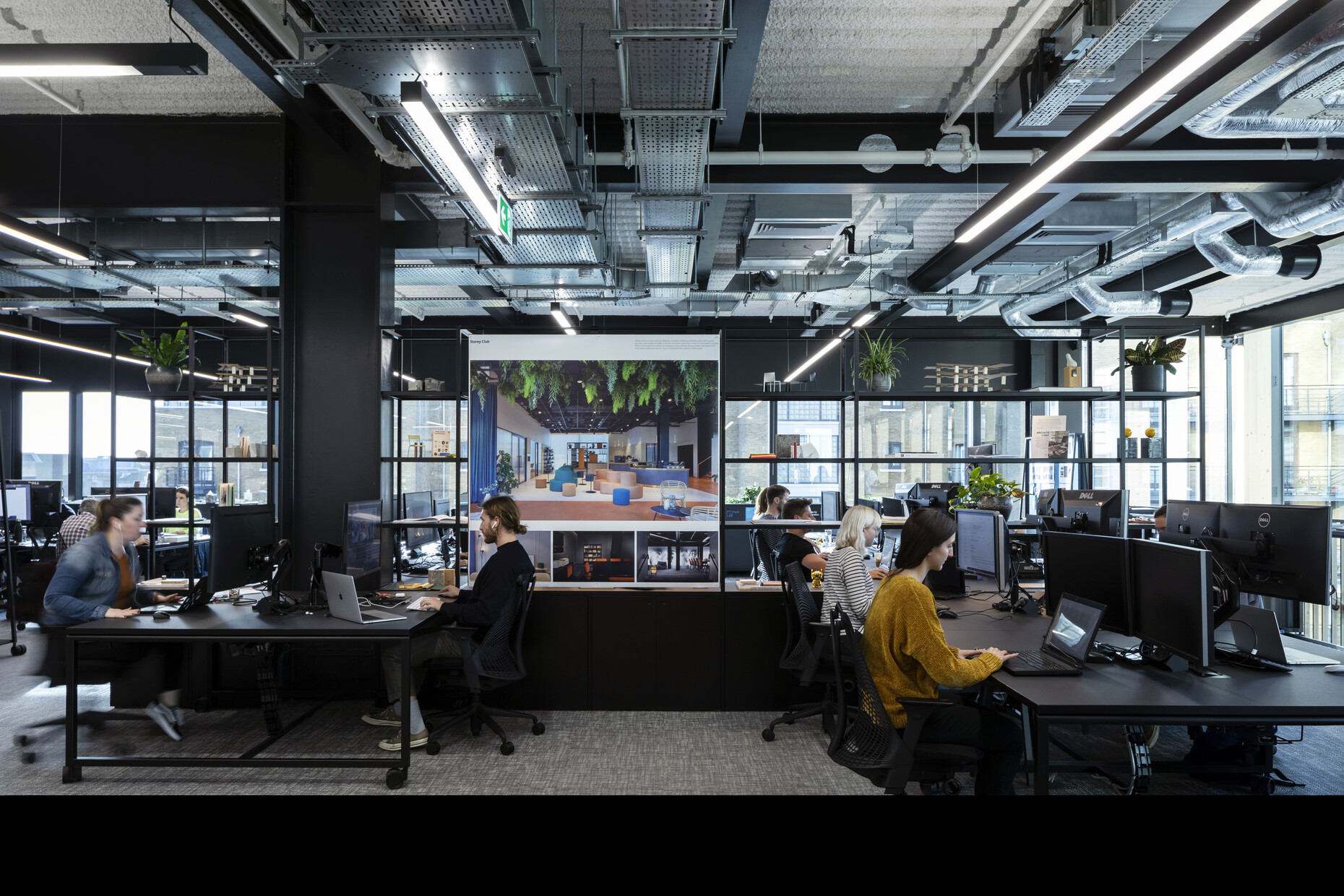NEW WORK
Ecosystems for Creativity
Anna Moldenhauer: Mr. Paré, you are in charge of Gensler’s Paris office. You are an architect and designer, but you also draw on art for your inspiration – most importantly, from works concerned with the interplay of light and space. Is this the interdisciplinary approach what’s needed to realize fascinating projects?
Philippe Paré: I think an interdisciplinary approach is needed, particularly when designing interiors. Interior design forces you to embrace a transdisciplinary approach because it requires that you craft experiences from the perspective of the user. It goes well beyond “object making“, and rather requires that you internalize the process to craft a solution drawing simultaneously from disciplines focused on perception, experience, emotion and phenomenology.
Can you give me an example of this kind of project?
Philippe Paré: With the Hyundai Capital Convention Hall in South Korea for example, we had no natural daylight to work with, no windows at our disposal. At the same time, we wanted people to enjoy being in the hall, even for longer periods of time. We were able to achieve this by structuring the space with light, thus blurring the physical boundaries. In this instance, abstract examples from art, such as the work of James Turrell, were especially inspiring.
The focus was later on a design that accommodated the user’s requirements – how are you currently adapting this approach to a design for offices?
Philippe Paré: A large number of workplaces stipulate guidelines to which the user must adhere. However, a process of rethinking is taking place, with the focus shifting increasingly to creating inspiring environments. What is important is to develop a toolkit which will allow users themselves to establish their own ecosystems for creativity, collaboration, concentration and innovation. Furniture is an important basic component in this and must be suitable for a variety of work settings. The need for this more flexible furniture is why we collaborated with Fantoni on the “Atelier” furniture solution. It was designed as an adaptive furniture solution that could easily respond to current workplace trends and organizational needs. The collection is lightweight and its modular nature means that elements can easily be reconfigured to suit individual user needs.
A desire for flexibility is often mentioned in the current debate about the new way of working. In recent years there have been a large number of ideas about how the ideal working environment should look, from open spaces with playful interiors and a return to the square all the way to flexible division into zones. In the wake of the pandemic and the increased use of the home office model, the office is now being discussed as a homelike meeting point. What is your take on this development?
Philippe Paré: That’s a very good question – I think the idea of a playful workplace represented an act of liberation from regimentation. In the latter case, the shape of the office was the physical manifestation of a corporate hierarchy and did not necessarily focus on employee well-being. I think that what we are now seeing is a meaningful development. In France, we launched a survey of office workers, the France Workplace Survey 2020, aimed at finding out what users would like to see from the design of an office after experiencing the home office environment over a considerable period. The criteria mentioned as important to the well-being of employees and thus to productivity were very basic – daylight, fresh air, cleanliness and the possibility of controlling the levels of light and noise. In future, the challenge as far as architects and designers are concerned, will be to mastermind the kind of offices that offer better conditions than remote working, in terms of health and well-being. Whilst remote work has been successful to some extent, it also served to confirm the importance of the workplace for collaboration and socialisation. A place for chance encounters, to generate discussions, spark ideas and build social capital. Exchanging ideas and working collaboratively can be challenging from a distance. But we should also not overlook the need for the office to serve as a place where focus work can take place (for some, the workplace is where the best focused work can happen). The workplace needs to be tailored to the needs of its people and provide an environment where they can be creative and productive.
I get the impression that at the moment the creatives are closing ranks, so that they can deal with the task collectively. How do you see this?
Philippe Pare: I get the same impression and I think that what is key here is to offer a sufficient diversity of workplaces within an office in order to give ideal support to a good mixture of remote workplaces and the standard office environment. However, as the France Workplace Survey 2020 revealed, the majority of employees considers the ideal situation to be outside the office for one or two days at most, as respondents recognize remote work is best for individual and focus tasks. If staff are away for longer, the connections to their colleagues are too easily lost and as a consequence they do not sufficiently feel that sense of belonging to their organisation. This difference in requirements is bound to result in a whole string of hybrid solutions, a number of which will be outside our towns and cities.
Was there an aspect of the France Workplace Survey 2020 that surprised you?
Philippe Paré: The findings were surprising because we found that respondents are seeking an evolution of their workplace not a total revolution. French office workers have a different attitude about remote work, far fewer of them left the office during the pandemic, and those who left were faster to come back to the office, more so than their UK, USA and Australian counterparts. The French feel a very strong connection to their offices, many people see the latter as the physical manifestation of the mission statement and values formulated by the companies they work for. This even means that many employees in spite of the threat posed by the pandemic still continue working in their offices. This showed us convincingly just how important the workplace is to the individual. I had rather expected an appetite for a revolution, for a dramatic shift in mood, causing people to completely reinvent the office. However, instead of new and crazy approaches what is called for is rather those well thought-through approaches which allow people to be able to work productively and flexibly.
If, when designing the office of the future, the focus should be on the needs of its users and on maximum flexibility in terms of working – how is it then possible to preserve the identity of a company?
Philippe Paré: This will be a challenge. In the kind of scenario where more people are working remotely, the social capital, indeed any connection to an organization, can quickly be jeopardized. A company’s corporate culture, its brand, its vision, its mission must, in future, be expressed so well that the impression they leave is a lasting one even if a person is only actually there for a few days at a time.
Which aspects of the discussion about the new way of working would you like to see in your own work, your own office?
Philippe Paré: I think that for us it is definitely the trust that we would like to keep. Giving staff the choice of where they would like to work and simultaneously, in parallel, the opportunity to come together at one table. What is important is to find the right balance between remote work and a standard office situation.
Are you currently working on a project that fits this challenge?
Philippe Paré: One example would be the facelift for the main lobby of a high-rise designed by Phillip Johnson in New York City. Reinventing the design of such an iconic building is something very special. The project is comparatively small but very complex. What is important is both to find new approaches and to preserve the spirit of the place, I’m looking forward to seeing that come to life. Another project I am excited about is an office building in Paris in which we will be attempting both to blur the boundaries between public and private space a little bit more and to encourage the use of bicycles. With most buildings the cyclist’s entry experience can be an afterthought often relegating it to the least desirable part of the building. We wanted to change this experience for users, and instead provide an entry experience that is in equal part to a pedestrian visitor. The aim is to construct the building in as sustainable a manner as possible, using materials from the region and an energy-efficient concept.
In other words, sustainability on many levels, from the building’s basic structure right down to its usage.
Philippe Paré: Exactly. I believe that it is worthwhile to bring innovative ideas to bear to breathe new life into a building, instead of tearing it down. Particularly when it comes to redesigning offices. Instead of reducing the space available for the office facilities we should find ways of using that space more efficiently and more consciously.











